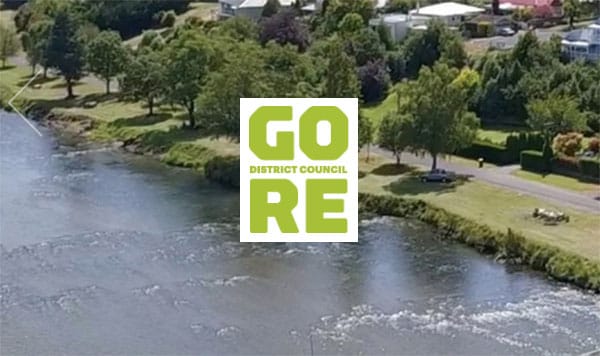The Gore District Council yesterday adopted its 2022-23 Annual Plan, delivering a 5.94% district-wide average rates increase.
Chief Executive Stephen Parry said it was a pleasing result when set against a backdrop of record levels of inflation, supply chain issues and associated cost increases, and the global impact of the invasion of Ukraine.
When the Council prepared its budget for the coming financial year, inflation was 2.3%. It was sitting at 6.9%, a 30-year high for New Zealand, in the first quarter of this year.
“A common catch cry of council critics is rates increases should be in line with inflation, so the Council is please it has managed to keep the rates increase below inflation.”
Mr Parry said cost increases in roading were responsible for a significant portion of the rates rise.
“Due to external pressures, we have had to add 20% ($710,000) to our roading budget to retain our service levels.”
The increase in roading costs will have an impact on higher-value properties, he said.
This was due to the Council’s long standing financial policy which sees rates funding for roading coming from capital value rates, not general rates.
The rates increase for an average valued property in each of the Council’s four rating areas will be:
- Gore – $193 a year increase on a home with a $375,000 CV
- Mataura – $131 a year increase on a home with a $150,000 CV
- Commercial – $480 a year increase on a property with a $400,000 CV
- Rural – $285 a year increase on a property with a $2.5 million CV
The Council is budgeting on collecting $20.3 million in rates this year, which is $1.0m more than was budgeted for the current year.
Gore District Mayor Tracy Hicks said it was pleasing to deliver the same levels of service and range of projects as was flagged in last year’s 10-Year-Plan without burdening ratepayers.
“We’ve worked hard to minimise the unforeseen impact on supply chains caused by COVID and the Russian invasion of Ukraine.”
One of the cost-saving measures to keep the rates increase down was to opt for no principal payments on debt associated with Three Waters assets.
“While there is still uncertainty around the reform, the Government’s proposals would see Three Waters debt transferred to a new water entity.”
The Council was committed to delivering major infrastructure and place shaping projects despite the challenges, Mr Hicks said.
“Early next year, we will open the doors to our new library and community centre, upgrade the Mataura water treatment plant and see the 36-section Matai Ridge residential development come to fruition, among other things.”
Mr Hicks acknowledged the uncertainty and opposition to Three Waters reform.
“There’s no argument something needs to be done about the quality of our drinking water and how we dispose of wastewater to meet the Government’s stringent environmental standards.
“Councils can’t do it alone, though. The burden on ratepayers would be crippling. We have let the Government know our preference is a funding model similiar to the one we have with Waka Kotahi NZTA.”
While the reform debate continues, it will be business as usual in the coming financial year, Mr Hicks said.
Chief Financial Officer Lornae Straith said the rates increase for commercial ratepayers was a direct result of the Council’s Revenue & Financing Policy, which provides the blueprint for “who pays for what”.
When costs increase in one of the Council’s activities at a different rate to costs in other departments, the policy defines where those costs sit. The policy places the recovery of roading costs through a targeted rate for Urban and Rural roading within the ward rate. The urban rate is then further split between residential and commercial for Gore and Mataura.
Mataura residential and commercial rates are subsidised by heavy industry properties within the Mataura rating area. Heavy industry properties in Mataura do not pay a ward rate. Instead, they pay a separate heavy industry rate, she said.
The Revenue and Financing Policy dictates that the heavy industry rates increase is adjusted in line with the District-wide average rate increase, which is 5.94% for 2022-23.
Consequently, Mataura’s heavy industry ratepayers won’t experience the impact of the 20% increase in roading costs, and therefore the policy pushes these costs onto Mataura commercial ratepayers.
“Given there are a smaller number of commercial ratepayers to spread the increased costs over, the comparative rates increase is higher,” she said.
Mr Parry said rating outcomes such as this reinforce the Council’s decision to undertake a thorough review of how we assess and set rates. The review will include examining the need to retain specific rating areas, such as Gore, Mataura, Rural and Heavy Industry, along with the need and desirability of imposing differentials for the likes of commercial and industrial properties.
Any changes emanating from the Revenue and Funding Policy review will be included for consultation in the 2024 – 2034 10-Year-Plan.

